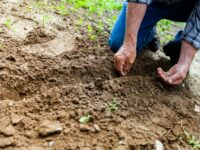Indoor plants do not just make our homes pretty, but they go a long way in adding fresh air into the home. As a matter of fact, some plants such as the snake plant, Spider Plant, and peace lily serve as natural air purifiers when grown indoors. You can always buy them fully-grow, but propagating is more fulfilling since you cultivate the plant and watch it grow. You might even enjoy planting
However, it doesn’t work like magic. Cultivating an indoor plant like dracaena fragrans is a huge responsibility. You will need to provide everything the plant requires for it to grow healthy and bountiful. If you subject it to poor conditions, the plant can die within hours if not minutes. In this piece, we shall take a look at four things you need to know about propagating your house plants.
1. Avail the Conditions Required
There are various biological and environmental conditions required to ensure the healthy growth of any growth. Most of these conditions occur naturally in the environment, but supply may be limited when growing your plant indoors. A philodendron burle marx likes moderate room temperatures, from 60 to 75 degrees F. Still, they tolerate lower temperature conditions than most of the other houseplants. In any case, avoid frost and temperatures below 50 degrees F. First, check on the time of year since it is critical for roots and shoots formation. Also, the area should be within controlled temperature, humidity, and water levels. This is to prevent water loss from transpiration and increase plant process for growth. Secondly, the source plant should be healthy and passed through good nutrition.
Most importantly, your plant will need light for photosynthesis, a process through which plants make their own food and produce energy for healthy growth and reproduction. In most cases, house plants do not get a good dose of sunlight for obvious reasons. Especially for succulent plants, this is where grow lights come in handy, thanks to modern technology. Led lights are precisely what we are talking about here, the ones designed to mimic natural sunlight and promote plant growth. They can help promote normal healthy growth in your plan, alongside other factors such as proper air conditioning and de/humidification.
2. Acquiring New Plant
There are several methods available for getting the piece of plant to be propagated. For instance, you can use cuttings of a plant’s leaves or stem to grow a new plant depending on the species you are interested in. The plant you are getting the cuttings from should be healthy. The absence of diseases and pests influences the success rate of the new plant. Secondly, you may have to learn about layering, where you bury the stem or branch into the soil. After some time in the right conditions, roots and shoots develop to eventually create a new plant. Some common layering styles include:
- Simple layering
- Tip layering
- Compound layering
Lastly, there is division. In this method, you break out clumps into segments with buds. This is most common in perennial plants.
3. Rooting and Potting
Root development can take from a week to months depending on the plant, the conditions available, and the propagation method used. To get roots, place cuttings on moist soil or put them in a jar of water. When using water, do not leave them for long. This may get them to adopt as water plants, meaning they will do poorly when transferred to the soil. Once you feel the roots have developed, you can pot or repot your plants, ensuring the soil is freshly harvested. You can also add fertilizer. For stems, ensure you cover with the right amount of soil to prevent suffocating the plant. Finally, the soil should be well-drained and loose to ensure oxygen circulation.
4. Tools Needed
You only require a few tools to make this operation a success. First, you need a clean, sharp knife or clippers to make cuttings. This is because they ensure a clean, flawless cut minimizing the level of disease transfer and damages. Also, you need the rooting hormone. This is not a must but, it is necessary to fasten the rooting process. You can get it at the garden center close to you. Lastly, you will need the pots to put your new masterpieces in. If you are dealing with commercial propagation, you may need additional equipment like thermometers and greenhouses.
Plant propagation is not rocket science, so you won’t have to pull your hair out. It can be a rewarding task if you take your time and have patience. It is inexpensive; especially considering the numerous benefits these green living things will give you and your house. The above few tips can help you cultivate healthy and fresh plants all year round.
















